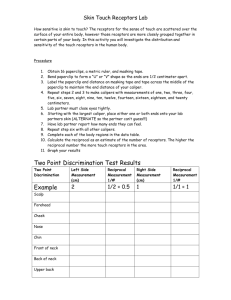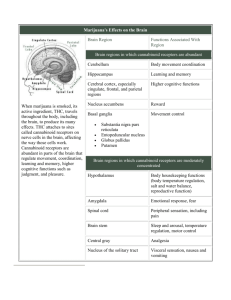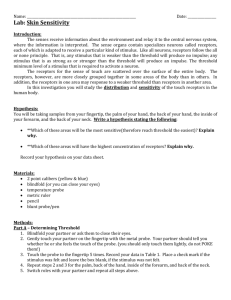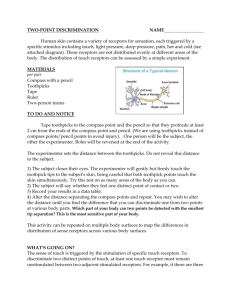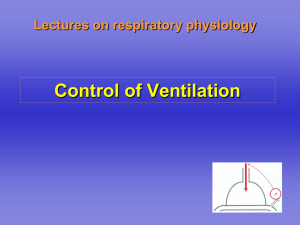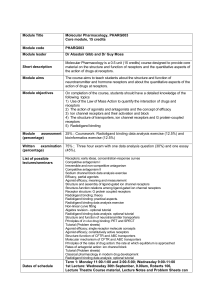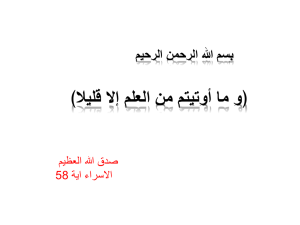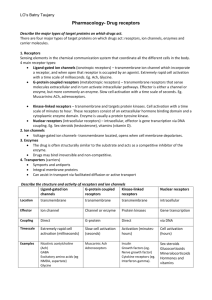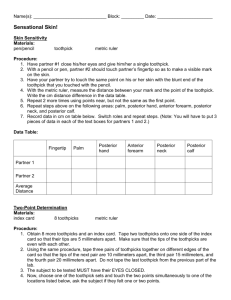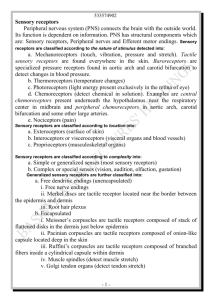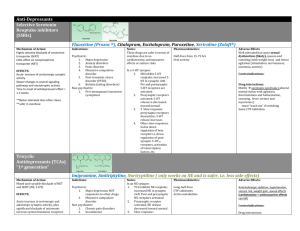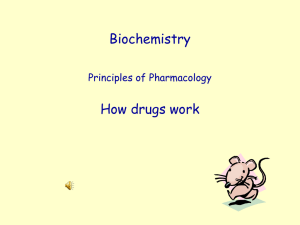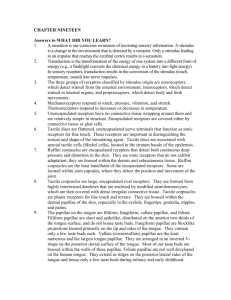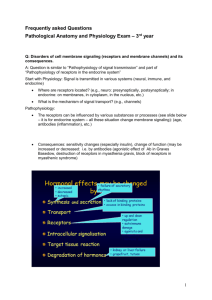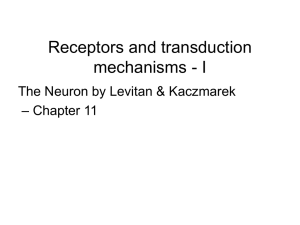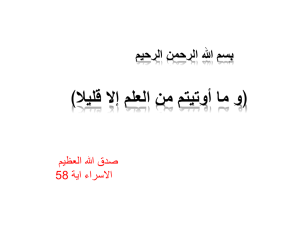Introduction to Sensory Receptors
advertisement
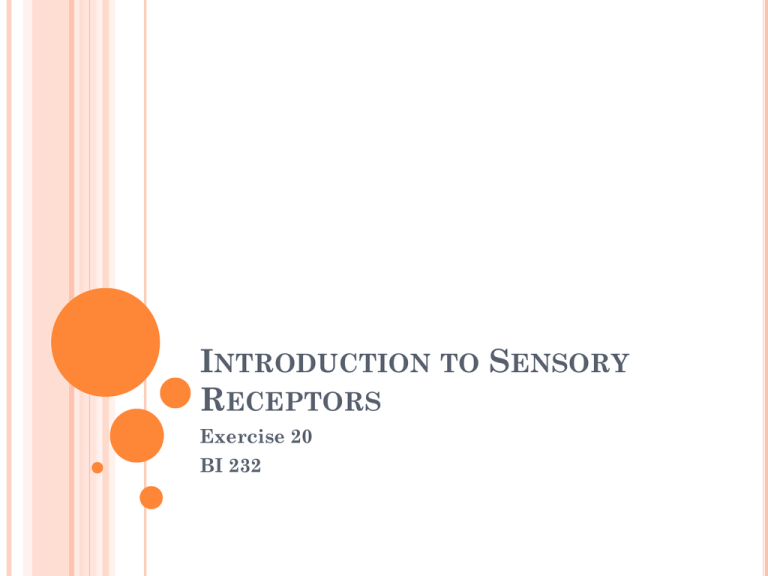
INTRODUCTION TO SENSORY RECEPTORS Exercise 20 BI 232 INTRODUCTION AND TERMINOLOGY There are many types of sense receptors in the body. They are not uniformly distributed Punctate distribution is the pattern of uneven distribution throughout the body There is no perception without environmental input, which are listed by type, or modality. Examples of modalities are: light, heat, sound, pressure, and specific chemicals Receptors are the receiving units and respond to stimuli RECEPTOR TYPES Photoreceptors- detect light (retina) Thermoreceptors – detect temperature (skin) Proprioreceptors – detect changes in tension (joints) Pain (nociceptors) receptors (free nerve endings in skin stomach etc.) Mechanoreceptors - perceive mechanical stimuli (touch) Baroreceptors – change in pressure (BP) Chemoreceptors – changes in chemical environment (taste and smell) TOUCH RECEPTORS Light touch receptors include Meissner’s corpuscles and Merkel discs. Found in the upper dermis. Deep pressure receptors are the Pacinian (lamellated) corpuscles found deep in dermis or hypodermis. Remember from 231? Review slides TWO-POINT DISCRIMINATION TEST Map relative density of receptors Partner sits with eyes closed and hand resting on counter with palm up. Use calipers to touch your lab partner’s fingertip with both points of the instrument and see if they can determine between one and two points. Start with calipers close to closed and repeat the process opening the calipers a little with each touch. Stop when partner feels both points. Measure the distance. Do this again on the forearm, palm, and back of neck and compare the results. WARM AND COOL RECEPTORS Skin has receptors that are sensitive to cool or warm temperatures: Take 2 probes; one from ice bath and one from warm water bath. Lab partner closes his or her eyes Test the ability of your lab partner to distinguish between the cool and warm probes by putting the probes on forearm Do this 5 times with each and see which temperature was more accurate MAPPING TEMPERATURE RECEPTORS Mark off a square that is 2 cm on a side on the anterior forearm of lab partner Use hot and cold water baths again Use pointed end of probe and place in cold water. Test areas in the square. When partner perceives cold mark with blue marker (not just touch. Do the same with warm probe MAPPING LIGHT-TOUCH RECEPTORS Draw 2 cm square on lab partner’s forearm. Use Von Frey hair to map the number of areas in the square that your lab partner can perceive. Press only until the hair bends a little to simulate the touch corpuscles. Use black felt pen to record results Do this again on lateral side of the arm ADAPTATION TO TOUCH Tonic receptors constantly perceive stimuli. Phasic receptors adapt to a stimulus Crumple a small piece of paper into a ball. Place ball of paper into partner’s palm. Are light touch receptors tonic or phasic? LOCATING STIMULUS WITH PROPRIOCEPTION Have partner close eyes. Touch partner’s forearm with a felt marker. Have partner try to locate the same spot with a felt marker of another color. Test 5 locations on various parts of forearm. Repeat each location twice Or use parts of body: corner of eye, ear lobe and chin TEMPERATURE JUDGEMENT Place one hand in cold water and another in warm water. After hands have equilibrated, place them both in the room temperature water. Describe to your lab partner what you feel REFERRED PAIN Perception of pain in one area of the body when the pain is actually somewhere else. Place your elbow into a dish of ice water and leave it there for 2 painful minutes Describe the sensation THE END OF EXERCISE 20 Go onto Exercise 26: Eye and Vision Make sure that you understand the tests
